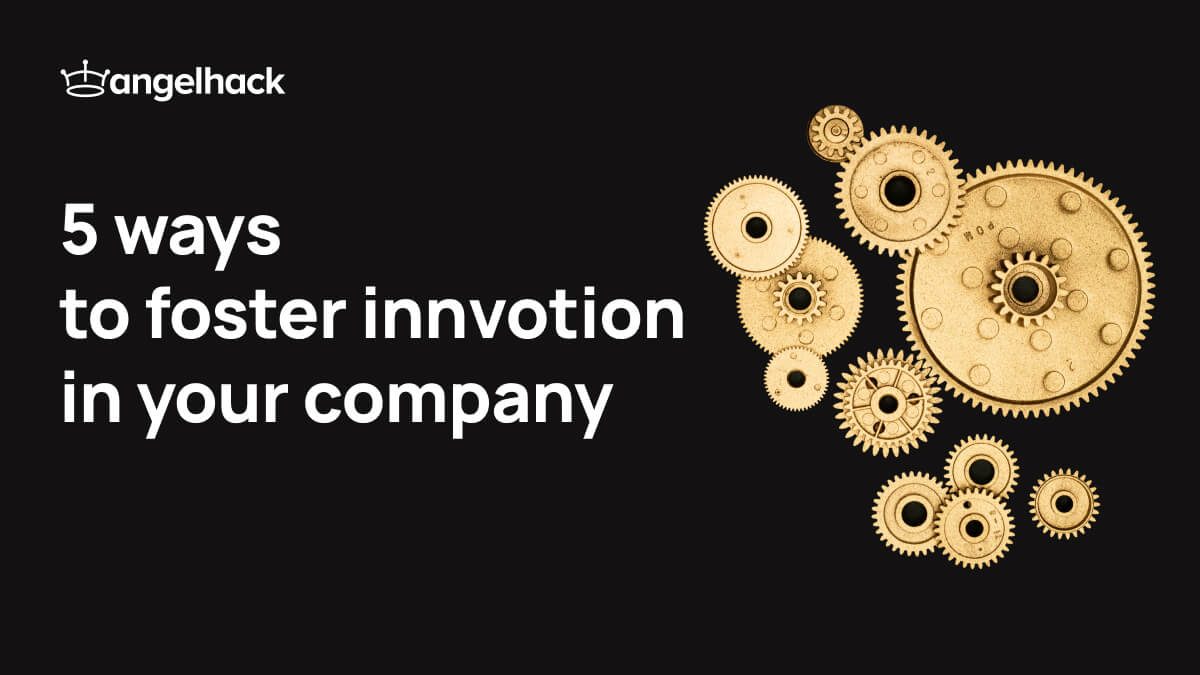Guest Post By: Victorio Duran III
The word ‘innovation’ holds a lot of promise. It suggests coming up with completely new things, from scratch – things that make life better, provide a great new service or create waves in a given industry. Indeed, innovation should be a key process in any company hoping to stand out in today’s market.
However, that definitely doesn’t mean that the process of innovation is easy. It can be riddled with mistakes and slip-ups. Thankfully, most of those mistakes are avoidable. Let’s take a look at seven of the most dangerous ones – and how to avoid them.
1. Providing poor systemic support
A smooth innovation process doesn’t just spontaneously spring into being. It needs the right kind of structure and support in order to be able to flourish.
When you expect innovation without ensuring that your company provides the appropriate kinds of spaces for the innovation process to take place, you’ll run the risk of losing out on all your employees’ innovative ideas.
That’s why it’s so important to have excellent innovation management – in other words, to make sure that innovative ideas have proper support channels. Employees who want to be involved in the innovation process should know where to go, and how your company will be handling that process.
Another important aspect of creating a support system should be the inclusion of branding in the innovation process. New innovations should always be branded from the get-go, and should specifically tie in with your overall brand image, as well as your company goals and values. A system that doesn’t encourage this type of innovation is one which promotes the creation of innovations that don’t advance your company’s agenda or support its brand identity. This, of course, is a dangerous mistake to make!
2. Having a lack of structure
When it comes to the process of innovation, it’s not enough just to have a strong system in place to support that process. You need to know what you’re aiming for, from the start of the project to its conclusion. In other words, you need a structure.Source: Pexels
Without a clear idea of what the purpose behind any given innovative project is, your employees will essentially be stumbling in the dark. That’s why you’ve got to make sure to provide them with clear, concise guidelines that still leave room for creative thinking.
The line between ‘providing too little structure’ and ‘overdoing it on the structural side, thereby stifling creativity’ is a fine one that you’ll need to walk in order to avoid either extreme. To that end, there’s a helpful rule to keep in mind regarding your attitude: be lenient, as long as it’s relevant. In other words, your structure should be flexible enough to include relevant ideas that fall just outside the established guidelines – but not so flexible that irrelevant material slips through.
3. Using the wrong tools
Project management tools can make a huge difference, turning a poorly-organized innovative process into one which is smooth and well-structured. Of course, this is only true if you’re using the right tools for your specific purposes, which is why using the wrong tools is another risky and needless mistake to make in the innovation process.
If you’re using a tool that doesn’t seem to be working for you, it’s important to consider alternatives. Consider, for example, looking closely at a Glip and Workplace comparison to see which of those tools is better suited to your purposes. You’ll often find that your company’s internal processes flow better, just by choosing a better-suited tool. Sometimes, this will even mean opting to stack software or combine multiple kinds of software to reach your desired end.
While each team’s specific needs are unique, all innovation-based teams thrive with strong internal and external communication. That’s why the tools you use should aim to improve communications within your innovation team(s), as well as help smooth out the process of communicating with other teams. To make this happen, each team will need good spam filters, as these will ensure that no spam content disrupts communications, thereby boosting the productivity of innovation teams.
4. Not adapting to remote work
Whether you’ve always had remote working DevOps or you’ve just made the switch, you need to take this into account. Unfortunately, not every company is able to adapt to these conditions with equal levels of success. If your company falls into that category, this can be a major threat to your innovation process.
The important thing to keep in mind when it comes to working remotely is that each employee’s conditions are unique. Members of a team might be scattered across time zones, for example. Many employees will be finding themselves working with their families around, and/or in a situation where their network connection isn’t ideal.
As mentioned above, the right tools can help to mitigate many of these issues. In particular, having access to excellent digital collaboration software is immensely helpful in ensuring that the innovation process continues to function well even in a remote working environment. Be generous and compassionate in your approach, and you’ll quickly find employees thrive and remain innovative, instead of finding themselves stifled by stress and deadlines.
5. Assuming innovation ends at production
An innovation process that fails to properly consider the product life cycle of its new developments is an innovation process that is doomed to failure. This might sound dramatic, but it’s true: if your assumption is that innovation ends when the product is in production, your company’s innovative ideas will meet early ends and enjoy limited success.
Your company’s branded innovations have the potential to be fantastic. They should be treated as such! A fantastic idea deserves to be broadcast; a fantastic product deserves to benefit from the best marketing strategies.
6. Focusing on the wrong things
It’s easy to get lost in the details. When the goal is “to create something new”, or something similarly vague, the resulting innovations will often miss the mark and end up being new – but ultimately useless.
The best way to avoid this situation is to focus on increasing customer satisfaction above all else. This can happen in various ways. For example, your innovations could focus on providing your clients with a new app that lets them find your products more easily, or on improving your automated phone system so that customers’ inbound calls are quickly redirected to the right experts to provide help.
In both of the above examples, the innovations have a clear purpose and are geared towards improving the customer experience. The crucial factor to look for in innovations is whether they’ll make your customers happy and keep them coming – and whether they’ll make your brand more attractive to potential leads. Not all innovation involves creating new products from scratch – sometimes, it’s just about improving what you have.
7. Not doing enough research
Picture this: you want your innovations team to focus on creating solutions for your customer call center to ensure that the service is improved. Your employees aren’t exactly sure what a call center could need, but the deadline is approaching, so they go with their best guess.
The problem here makes itself obvious: not enough research into relevant topics was done. In the case outlined above, which pertains to call centres, the innovation team should have looked into exactly what outbound calling means. It would also benefit them to ask the relevant customer service teams questions like “what is an inbound call, and how can we optimize it?” or “how do outbound calls compare to inbound calls?”
Doing too little research is a risky mistake to make. On the other hand, there’s not really such a thing as doing too much research – the more you know about a given topic, the more helpful your ideas will be. That’s why it’s absolutely crucial to make sure that your innovation process includes a research stage.
Continuing to avoid mistakes
These seven mistakes are some of the biggest and most prominent ones in the innovation process. However, that doesn’t mean that avoiding these will also ensure you avoid all others.
If your goal is to keep the innovation process as smooth and seamless as it can possibly be, you’ll need to keep the tips in this article in mind. Additionally, it’s important to make sure that your innovation process also leaves room for constant re-evaluation, so that flaws in the plan are spotted as quickly as possible and can be fixed.
Make sure you remain flexible (but not too flexible, as we discussed in the second tip!) and open-minded throughout the process. When you do this, you leave yourself open to constant improvement. That’s the best way to mitigate mistakes, if not avoid them entirely.
Victorio is the Associate SEO Director at RingCentral, a global leader in cloud-based communications and collaboration solutions. He has over 13 years of extensive involvement in web and digital operations with diverse experience as a web engineer, product manager, and digital marketing strategist.



